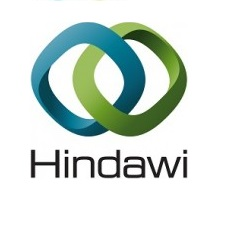| مشخصات مقاله | |
| ترجمه عنوان مقاله |
وضعیت ویتامین D و عوامل خطر مرتبط با آن در میان بزرگسالان منطقه جنوب غربی کامرون |
| عنوان انگلیسی مقاله | Vitamin D Status and Its Associated Risk Factors among Adults in the Southwest Region of Cameroon |
| انتشار | مقاله سال ۲۰۱۸ |
| تعداد صفحات مقاله انگلیسی | ۱۰ صفحه |
| هزینه | دانلود مقاله انگلیسی رایگان میباشد. |
| پایگاه داده | نشریه هینداوی |
| نوع نگارش مقاله |
مقاله پژوهشی (Research article) |
| مقاله بیس | این مقاله بیس نمیباشد |
| فرمت مقاله انگلیسی | |
| رشته های مرتبط | پزشکی |
| گرایش های مرتبط | علوم تغذیه |
| نوع ارائه مقاله |
ژورنال |
| مجله / کنفرانس | مجله تغذیه و متابولیسم – Journal of Nutrition and Metabolism |
| دانشگاه | Faculty of Health Sciences – University of Buea – Cameroon |
| شناسه دیجیتال – doi |
https://doi.org/10.1155/2018/4742574 |
| کد محصول | E10435 |
| وضعیت ترجمه مقاله | ترجمه آماده این مقاله موجود نمیباشد. میتوانید از طریق دکمه پایین سفارش دهید. |
| دانلود رایگان مقاله | دانلود رایگان مقاله انگلیسی |
| سفارش ترجمه این مقاله | سفارش ترجمه این مقاله |
| فهرست مطالب مقاله: |
| Background ۱ Introduction ۲ Methodology ۳ Results ۴ Discussion References |
| بخشی از متن مقاله: |
| Background
Vitamin D has been shown to exert its actions on the musculoskeletal, gastrointestinal, prostate, renal, endocrine, immune, and cardiovascular systems. Current reported data of hypovitaminosis D reveals a global pandemic, with an estimated one billion people worldwide presenting with hypovitaminosis D. Objective. *is study aimed at investigating the vitamin D status and its associated risk factors in Cameroonians from the South West Region. Method. *e study was a community- and hospitalbased prospective longitudinal study. It was carried out during the dry and rainy seasons between the months of July and December 2015 in the South West Region of Cameroon involving 372 participants aged 35 years and above. After obtaining informed consent, a structured questionnaire was used to capture demographic data and risk factors of vitamin D deficiency. Blood samples were collected from the volunteer participants in the peak months of the rainy season and dry season, and the serum used to analyse for vitamin D by ELISA and calcium by spectrophotometry. 25(OH)D levels ≥۷۵ nmol/L (≥۳۰ ng/mL) were considered sufficient while levels <75 nmol/L were considered as hypovitaminosis D (insufficiency/deficiency). Results. Hypovitaminosis D (deficiency/insufficiency) was prevalent in 25.8% (96) of the study population, with only 3.2% (12) deficiency and 22.6% (84) insufficiency. *ere was a significant inverse relationship (r � −۰٫۱۱۹, p � ۰٫۰۲) between age and 25(OH)D levels; however, this relationship was not significant when controlled for gender, number of hours spent outdoors, and percentage of body covered. Gender, ethnic origin, percentage of body covered, time spent outdoors, and season did not influence serum vitamin D levels. Conclusion. Results of this study suggest that the prevalence of hypovitaminosis D is relatively low in this study population and only age is a risk factor of vitamin D deficiency. Introduction The vitamin D content of the human body is synthesized from the precursor molecule 7-dehydrocholesterol (7-DHC) in the skin by the action of ultraviolet B (UVB) irradiation (280–۳۲۰ nm) from sunlight. *e UVB radiation converts 7-dehydrocholesterol in the skin to vitamin D3 which is then transported to the liver for hydroxylation to 25-hydroxyvitamin D [25(OH)D]. 25(OH)D is then transported to the kidney where another hydroxylation occurs forming 1,25- dihydroxyvitamin D (1,25(OH)2D3) which is the active form of vitamin D, referred to as vitamin D hormone [1, 2]. About 90% or more of the circulating vitamin D in the body is contributed by cutaneous production, while the remaining portion comes from diet. *ough 25(OH)D is not the active form of the hormone, its measured blood level is accepted for the determination of vitamin D status because it is the most stable form of vitamin D metabolites and has a longer blood half-life [3]. *ere is growing evidence in literature of the diverse function of the vitamin D hormone (1,25(OH)2D3). Primarily, vitamin D induces the proteins involved in active intestinal calcium absorption and also stimulates active intestinal absorption of phosphate. It also has the ability to mobilize calcium from the bones in the absence of dietary calcium [2]. A growing world of knowledge is being produced revealing the noncalcaemic actions of vitamin D due to the wide distribution of the vitamin D receptor. Vitamin D has been shown to exert its actions on the musculoskeletal, gastrointestinal, prostate, renal, endocrine, immune, and cardiovascular systems [4]. |
